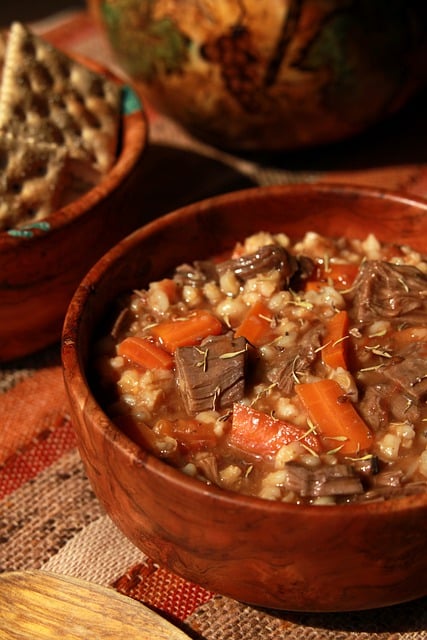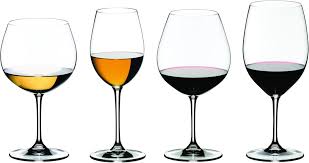Cooking with Wine has been done for centuries to tenderize meats and enhance the flavor of all kinds of dishes. The ancient Greeks and Romans cooked with wine and were known to include it in sauces, braises, and stews. Pottery jars found in China in 7000 to 6600 BC, shows man was brewing alcohol and we can surmise they using it in cooking, also.
Why Cook With Wine
The answer to that is flavor, flavor, & flavor. In addition, Wine’s acidity acts as a natural tenderizer for meat. You could also us vinegar, but it doesn’t taste anywhere as good. The acid in wine also helps the more delicate flavor of other ingredients stay tender and keeps everything from drying out. Wine imparts a concentrated flavor as it cooks down, especially to a savory dish. For a wonderful Fine Wine opportunity, see our Wine Club.
Ways You Can Cook With Wine
- Roasting- In choosing a wine for roasting, consider the flavor of what you’re roasting; A medium dry red wine goes well with meats like lamb, pork, and beef; lighter white wine goes better with roast chicken or root veggies like parsnips or squash.
- Steaming- steaming, again the reason to use wine instead of water is flavor, your poached fish is much tastier in a light white wine. Rice wine works well here also.
- Marinades- The reason for a marinade is to flavor and tenderize. Which wine here? Depends of what you’re marinating.
- Braising- This is the process of browning food quickly, and to develop flavor and then cook it slowly with it’s cooking fluid, in a covered pot. Usually can be done with any wine but also with a fortified wine such as port or brandy added in the cooking fluid.
- Deglazing- sauteing the meat quickly to brown, then the meat is removed and you are left with all these brown bits on the bottom of the pan. The brown bits are where all the flavor is so you ‘deglazed the pan’ by adding some wine and scrapping the brown bits up. These are then used to make a sauce.
- Baking- Prosecco in the batter of what you are baking gives the batter bubbles and helps to make a lighter batter due to the aeration from the bubbles. Sparkling wine is used in this kind of dish. I have heard of red wine chocolate cake, but I have never tried it.
- Soups, Sauces, and Stews- This is the way I do most of my Cooking With Wine. I was brought up with soup starting almost every dinner. Using a fortified wine can also be done to give ‘body’ to a soup or stew as well; look at Julia Child’s recipe for French Onion Soup, it includes wine, sherry, and brandy.
Decreasing The Alcohol Content When Cooking With Wine
The longer you cook your dish, the more alcohol cooks out, but you have to cook it for about 3 hours to fully erase all traces of alcohol. After 30 minutes of cooking, alcohol content decreases by 10 percent. And does so with each successive half-hour of cooking, up to 2 hours. That means it takes 30 minutes to boil alcohol down to 35 percent and you can lower that to 25 percent with an hour of cooking.
Other Tips To Successfully Cook With Wine.
Tannins will bind to proteins in food, so a wine with less tannin is better to use. The most heavily tannin wines are Cabernet Sauvignon, Shirazi and Sangiovese. Not to say you can’t use these wines, but follow the directions in your recipe.
It’s important to add the wine early in the cooking process to evaporate most of the alcohol content. Adding it at the end, the taste of the wine will overwhelm the taste of food, all you’ll taste is the wine.
If you wouldn’t drink a wine, don’t add it to your dish. That’s why I never add ‘cooking wine’ or ‘cooking sherry’ to what I am cooking. Every tasted either of these? You wouldn’t want a glass of either of them, they are very salty. The French have a saying, “The Better The Wine, The Better the Dish.”
Unless you’re and expert, (you went to a cooking class, or learned from a chef), Don’t try to flambé anything- this is harder then it looks, and there is actual fire involved.
What Wines Should We Cook With
In enjoying food and wine together, or ‘pairing’, both the food and the wine complement each other and bring out the best in each other. A good pairing highlights the flavors, tannins, spices, and (sometimes) sugar of each element. The same idea applies in Cooking With Wine.
Wines with high acidity levels like Sauvignon Blanc or Chardonnay work well in cooking. Generally, Dry red and white wines are recommended for savory dishes.
Whether cooking with red or white wine, avoid ‘oaky’ wines (like Cabernet Sauvignon or Chardonnay (oaked, this means they are aged in oak barrels), as these may become bitter when cooked.
Sweet wines, such as Sauternes, Moscato or sweet Riesling, go with dessert recipes.
If your recipe calls for a red wine, you can feel confident adding a Merlot, Pinot Noir, or Petite Shiraz to your cooking.
A Zinfandel, Merlot, or Shiraz will work well with heavier meats such as ribs, lamb, or Roast Beef. To see Grass Fed Nutrient Dense Beef from Wyoming, Go Here.
Bordeaux, the lighter, simpler options that are dry, like a Gamay or Grenache, are very adaptable to a wide group of dishes.
More Tips About What Wine to Choose In Cooking
If your recipe calls for light, dry rosé wine, your can substitute with a with crisp, light- to medium-bodied white wine if you need to do so. Got some Vermouth at home? If so, you may want to try using it in cooking. It’s an aromatized fortified wine that contains herbs and spices that give it a more complex flavor. Herbs do play a part in the process of wine making. The grape picks up the flavor of the herbs growing in the ground around the vineyard. That’s why certain wines can only be called by their district, (Champagne, for instance). It’s the ground and the herbs growing in the ground there that make the taste of the wine. For more about growing and cooking with herbs, see Growing Herbs For Your Kitchen.
It all comes down to what you like. Rosé adds softly tart and citrusy notes to a dish, whereas a white like Sauvignon Blanc might underscore the herbs you have added to your dish. The thinking is that dry red and white wines are what you use for savory dishes. I generally use Merlot and Pinot Noir, for meats and pasta Sauce, and Sauvignon Blanc or Pinot Grigio for chicken and soups.
Enjoy Cooking With Wine
If your a wine drinker, pour yourself a glass and enjoy the whole cooking process. Life is too short. Take your time, cook with family and friends, and go on a voyage of discovery into this fascinating world. I think that one of the best parts of cooking with wine is that you get to sample as you go along.
Cooking With Wine isn’t about making food to survive, it’s a pleasurable activity. Carefully select your ingredients and relax and savor all the tastes and smells along your journey- this is about enjoying the actual cooking. Have a good time.
Here is one of my favorite recipes where I add wine. When I started nursing school (before the days of the internet), I went home one weekend with a classmate. Her grandmother made us pasta with meat sauce. Well, I was in love. I had never had homemade Italian food before. So with my friend Anna translating, because her grandmother spoke only Italian, here is the recipe for meat sauce that I can away with.
Meat Sauce For Pasta
- 3Tablespoons Olive Oil
- 1 pound ground Beef or Sausage or a combination of both
- 1 medium onion, chopped
- 4 cloves of Garlic, minced
- 1/2 cup Red Wine, (I use Merlot)
- 1 (28 oz) can whole tomatoes, drained, fluid reserved
- 1 (15 oz) can of tomato Sauce
- 1 (6 ou) can of tomato paste
- 1 tablespoon Sugar
- 1 & 1/2 teaspoons of dried Basil
- 1 1/2 teaspoons of dried Oregano
- 1/4 teaspoon dried Rosemary
- 1/4 teaspoon of dried Marjoram
- 1/2 teaspoon of dried Thyme
- Pinch Red Pepper Flakes
- Salt & Pepper to taste
- 1/4 – 1/2 cup Shredded Parmesan Cheese, not canned grated
A few tips before you make this. Opinions vary on how much sugar to add to the sauce. Some people add as much as a 1/4 cup, I like a smaller amount. Sugar will offset the acidity of the wine and the tomatoes. Some people go with a pound of ground beef, others think it should be sausage, a mix of beef, pork and chicken, opinions vary. The only opinion that counts here is yours. The pinch of red pepper flakes is so that the sauce will not be flat, it does not make it spicey. And finally, there is a big difference of opinion about how much cheese, if any to add. I like cheese in it, but I don’t load it down, I know my husband will add more at the table.
Directions
1.) In a large pot, heat the oil over medium high heat. Add the spices and let them become ‘fragrant’, about a minute. Add the onion, let is soften. Then add the garlic, only letting it cook a minute. (If you burn the garlic, your sauce may be bitter.)
2.) Now you add the wine, letting it simmer until the fluid is reduced by half. This may take a few minutes.
3.) Next add your meat, letting it brown. Add some salt and pepper. Start with 1/2 teaspoon salt, you can check it later.
4.)Add the whole tomatoes one at a time, breaking them up with your fingers as you go. When they are all in, stir and mix in well. Now you may add the paste, sugar, and the sauce.
5.) Cover and drop the heat to gentle simmer for 1 & 1/2 hours. Stir occasionally. If the sauce becomes too thick, add 1/4 cup of fluid drained from canned tomatoes. You might have to do this once or twice during this cooking time. (Another good fluid to use is reserved pasta water.) Don’t let the sauce burn.
6.) Finally, Remove pot from the heat and correct the seasoning, (add more salt and pepper, as needed) Stir in the cheese. Enjoy
Janine


